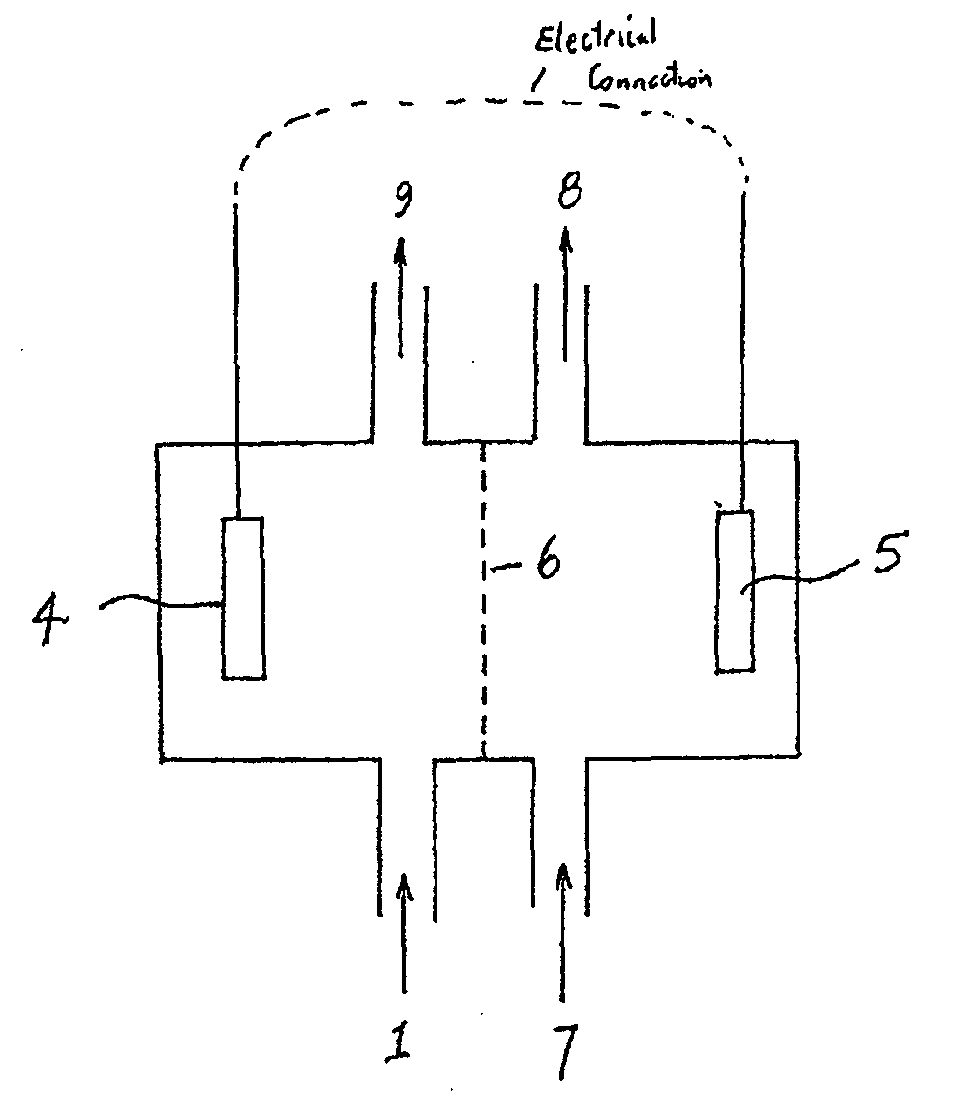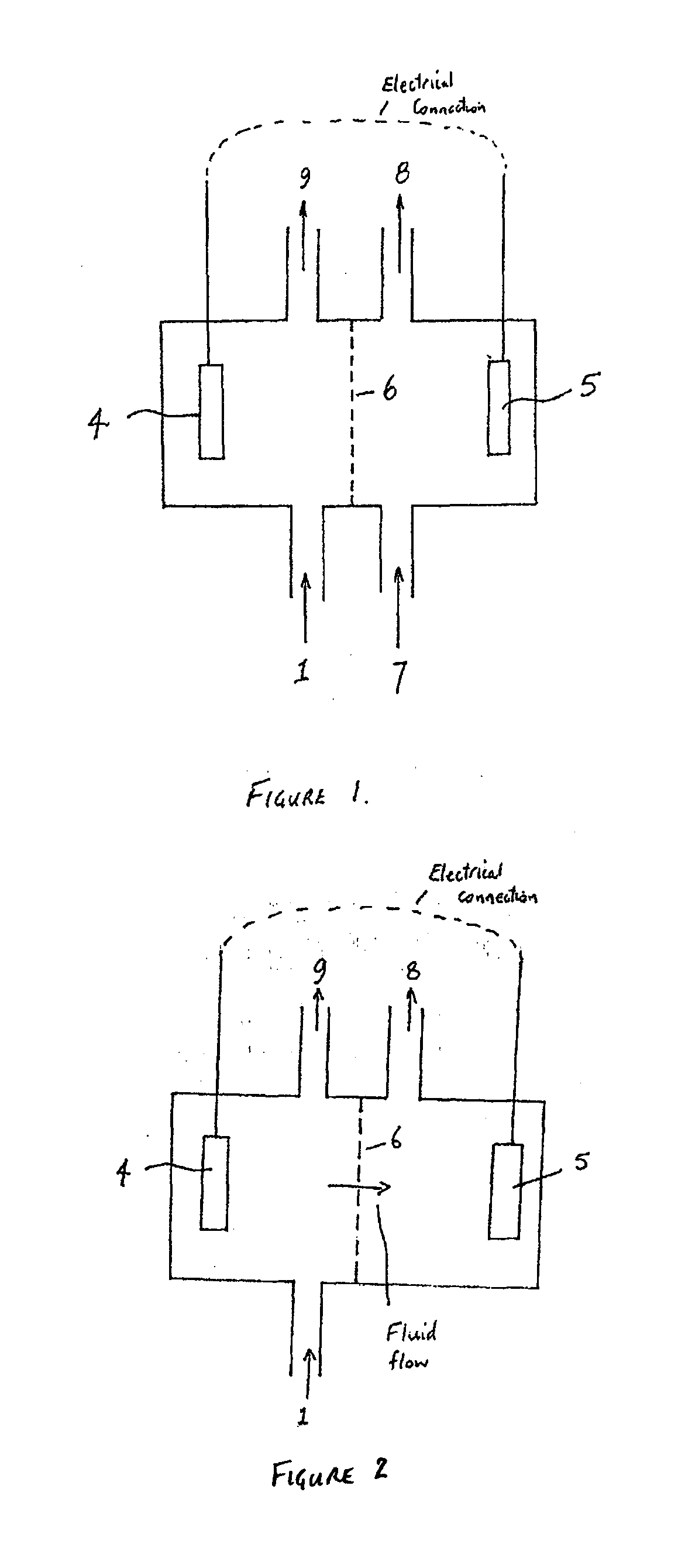Treatment of solutions or wastewater
- Summary
- Abstract
- Description
- Claims
- Application Information
AI Technical Summary
Benefits of technology
Problems solved by technology
Method used
Image
Examples
Embodiment Construction
[0095]Microbial fuel cells (MFCs) have generated considerable interest in the past few years. In a nutshell, MFCs use whole microorganisms as biocatalysts for the oxidation of (in)organic electron donors at an anode. From the anode, electrons gained from the oxidation are conveyed towards a cathode, the latter has a higher potential. As electrons flow from a low to a high potential, a power output is generated. MFCs are nowadays generally referred to as Bioelectrochemical Systems (BESs). One particularly complex issue BESs face is caused by the presence of cations, such as sodium and potassium, in wastewater or other feedstock supplied to the anode. As the concentration of these cations is generally much higher than the proton concentration, they are typically transported to a high extent through the cation exchange membrane of the BES to restore the charge balance between anode and cathode. As a result, the anode tends to acidify due to proton generation in the anode reaction, whil...
PUM
| Property | Measurement | Unit |
|---|---|---|
| Concentration | aaaaa | aaaaa |
Abstract
Description
Claims
Application Information
 Login to View More
Login to View More - R&D
- Intellectual Property
- Life Sciences
- Materials
- Tech Scout
- Unparalleled Data Quality
- Higher Quality Content
- 60% Fewer Hallucinations
Browse by: Latest US Patents, China's latest patents, Technical Efficacy Thesaurus, Application Domain, Technology Topic, Popular Technical Reports.
© 2025 PatSnap. All rights reserved.Legal|Privacy policy|Modern Slavery Act Transparency Statement|Sitemap|About US| Contact US: help@patsnap.com



